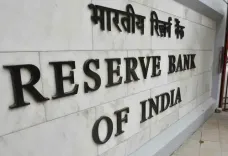How Did Indian Equities Maintain Their Resilience in June?

Synopsis
Key Takeaways
- Indian equities showed resilience in June.
- The Nifty 50 rose by 3.1%.
- Small-cap 250 index gained 5.73%.
- Healthcare and Defence sectors performed strongly.
- External economic factors remain critical to monitor.
New Delhi, July 22 (NationPress) Despite the geopolitical challenges that caused volatility mid-month, Indian equities showed remarkable resilience in June. This strength was supported by solid domestic macroeconomic indicators and a gradual recovery in investor sentiment, as highlighted in a recent report.
The Nifty 50 index surged 3.1 percent during the month, further extending its lead with a 6.3 percent return over the last 12 months. The Small-cap 250 index outperformed with a 5.73 percent gain for the month and an impressive 4 percent annual return, indicating a renewed interest from investors in broader market segments,” reported PL Asset Management.
Furthermore, the Nifty Mid-cap index experienced a 4.1 percent rise for the month and a 5.6 percent return over the past year.
The report attributes this positive momentum to robust macro fundamentals and an improved breadth across multiple sectors. Additionally, a ceasefire-driven recovery in global equities has also contributed to restoring investor confidence.
Cyclicals led the outperformance in June, with Digital (5.42 percent), Infrastructure (4.89 percent), and Tourism (4.38 percent) sectors standing out, while Healthcare (15.01 percent), Defence (21.78 percent), and Finance (14.3 percent) emerged as the strongest performers over the year.
The Banking and IT sectors also recorded substantial gains, driven by increased credit demand and the ongoing digital transformation, as highlighted in the report.
“June's data reaffirmed the ongoing disinflation trend, with strong tax collections and capital expenditure contributing to macroeconomic stability. However, external challenges such as fluctuating FII flows, tariff uncertainties, and monsoon impacts remain crucial factors to monitor in H2CY25,” stated Siddharth Vora, Head - Quant Investment Strategies and Fund Manager at PL Asset Management.
Market sentiment has significantly improved since late March 2025, with more stocks trading near their 52-week highs.
This shift indicates a broad-based enhancement in market participation, evidenced by the rising Nifty500 Equal Weight versus Nifty500 1-year rolling return spread, climbing off a cyclical low, suggesting early signs of improving market breadth and potential reversal or consolidation, according to the report.









